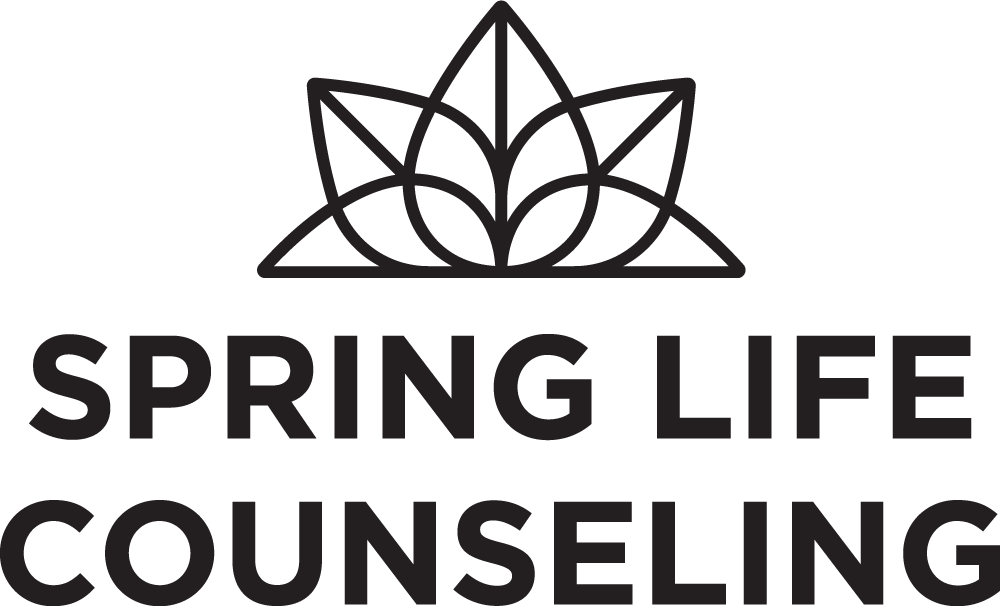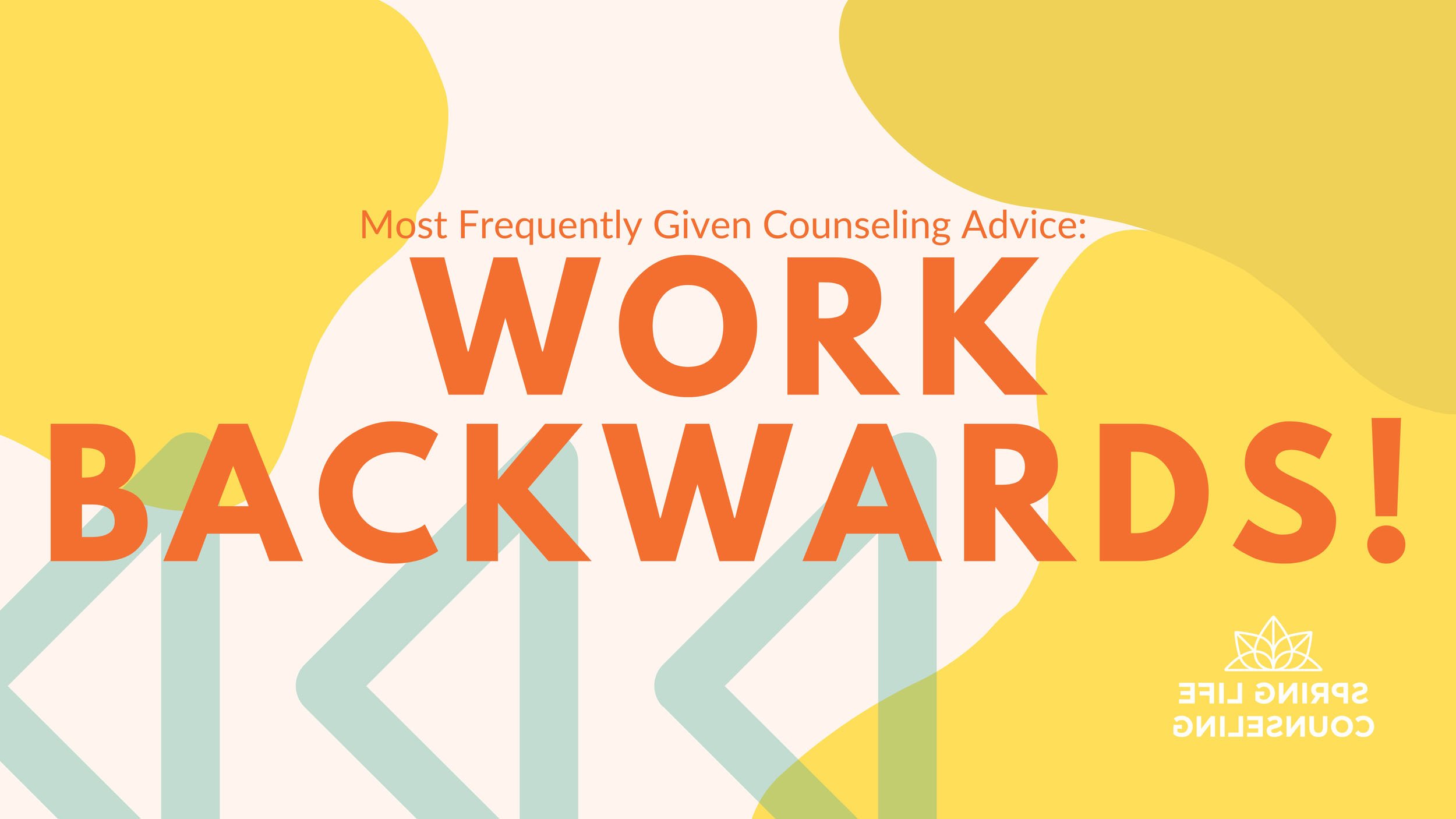Most Frequently Given Counseling Advice: Work Backwards
Work Backwards!
One of my most frequently given counseling advice isn’t as complicated as you’d imagine. When clients are stuck and not sure how to proceed, I simply suggest that they “work backwards.” I don’t know why these seem to be the magical words that unlock the path forward but in most cases, it does the trick!
Planning a tough conversation with your spouse? Work backwards!
Want a healthy relationship with your adult children? Work backwards!
Need to lose weight? Work backwards!
Gotta write a hard paper for school? Work backwards!
Work backwards? What does that even mean??
Begin with the end in mind.
So, how can you use this technique in your own life?
Let’s say you need to have a difficult conversation with someone at work regarding their lack of productivity, but you can’t quite figure out how you need the conversation to go.
What can you do?
Work backwards!
Consider the following:
How do you want to feel when you walk away from that conversation?
Probably, you’d like to feel confident and positive.
How do you want the other person to feel?
I bet you’d like them to feel encouraged and motivated.
Notice that this is the *emotional response* to how the conversation goes. Not the actual *content* of the conversation.
Striking this correct balance doesn’t happen by accident!
What do you need to say in order to achieve that emotional goal?
You need to clearly state what needs to change while not completely deflating them emotionally.
How do you need to say it?
The classic move here is to “Oreo” the confrontation.
Say something positive that they’re doing well, then the negative thing that needs to change, followed by another positive attribute.
The technique matters less than coming to the conversation with the proper heart, with the target emotion in mind. If you stay loyal to that emotional goal, your tone of voice, tempo and inflections will align with that goal.
By breaking down the What and the How or Tone of the conversation, you’re increasing the chance that you’ll nail your target.
How does it need to start?
What does your mindset need to be leading up to it?
What’s the mindset that would tank the conversation before it even really got started?
If you’re bringing “eye roll negativity” into that space, it will be reflected in your words and demeanor.
Be careful about this piece so it can be authentic and constructive.
Let’s do another example, a little closer to home. Let’s say HYPOTHETICALLY that you didn’t love how Thanksgiving went with your family or in-laws. But you have another family gathering coming up in a matter of weeks. How can you deck the halls without decking your mother?
“Allison. Do you really think I can change the dynamics of family time so that they are more enjoyable and peaceful?”
Well, yes, young grasshopper. I am here to tell you that this is possible. Can I guarantee it? No! I’ve never even met your mother! But, sure, it’s within the realm of possibility that we can improve the tone of family time.
How?! You guessed it!
Work backwards!
How do you want to feel when you get in your car to leave your family Christmas?
What will your conversations sound and feel like with your most problematic family member(s)?
What type of topics or exchanges do you want to have?
How can you facilitate those moments?
What will your mindset be as you walk in the door to the event and when you see that person for the first time?
What mindset could really ruin the chance of you having a positive interaction with that problematic person?
When dealing with humans, we all know that nothing goes perfectly according to plans. Thus is the nature of life. Like St. Paul says, “as far as it depends on you, live at peace with everyone,” (Romans 12:18). It may not entirely depend upon you. (It rarely does.) But you have to take responsibility for your part and plan for the best outcome possible.
Coming into these tough relational moments with a clear understanding of how you’d like the interactions to go will greatly increase your chances of things turning out as you hope.
If you’re ever stuck and don’t know how to proceed, just remember these two words: Work backwards!

